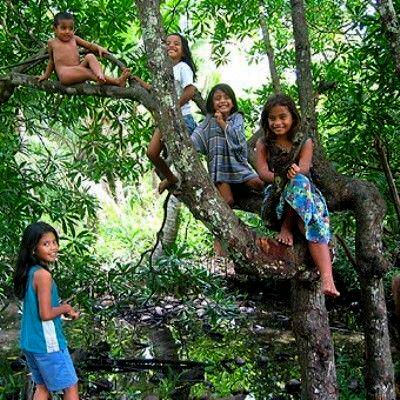
Figure 1.--Here we see Present day Nauran children at play. The children wear Western-style clothing. |

|
Nauru is located in the western Pacific, north of the Solomon Islands almost a squarely on the Equator. It was earlier known as Pleasant Island. Nauru is an uplifted coral formation. The population is primariy Micronesian and Polynesian totaling about 10,000 people. The initial Western presence was whalers using the island to resupply. A deadly tribal war followed which was only ended when Germany occupied the island (1888). The Germans developed the island's only important natural resource--phosphate. The Australians seized the island at the onset of World War I and after the War were granted a trusteeship by the League of Nations. The Japanese seized the island during the Pacific War (1942). Many of the men were forced into slave labor on the Caroline Islands. Nauru became a U.N. trusteeship (1947) and achieved its independence (1966). Nauru today is one of the smallest nations on earth. Australia helped set up a refugee camp on the island. Economically Nauru is an example of a 'rentier state'. Nauru is essentialy a large phosphate rock. There are rich deposits of phosphate close to the surface which permit inexpensive strip mining. The nation is essentially digging itself up and exporting the escavated phosphate. We do not yet have much information on Nauru, but we do have a Nauru school page. Children during the early 20th century still wore traditional clothing.
Nauru is located in the western Pacific, north of the Solomon Islands almost a squarely on the Equator. It was earlier known as Pleasant Island. Nauru is an uplifted coral formation. It is one of the most isolated places on earth. The closest importan land mass is Australia, more than over 4,000 kilometers away.
Nauru was settled by Micronesian and Polynesian peoples about 1,000 BC. The Nauruan settlers lived on coconut, pandanus fruit, and other plants from their liush new island home. They are believed to have invented an early form of aquaculture. They caught juvenile ibija, acclimated them to freshwater conditions, and raised them in Buada Lagoon. This was easier than actual fishing. This was all done by men. Women engaged in agriculture. Primarily due to its isolation, Nauru was able to avoid European colonization longer than most Pacific islands. The first Europeans visited Nauru named it Pleasant Island (1798). The initial Western presence was whalers using the island to resupply. A deadly tribal war followed which was only ended with European occupation. An Anglo-German Convention signed in Berlin divided Pacific areas between Britain and Germany (1886). Germany occupied the island (1888).
The Germans developed the island's only important natural resource--phosphate. The Australians seized the island at the onset of World War I and after the War were granted a trusteeship by the League of Nations.
Nauru was one of the few plces attacked by both Germany and Japn during the War.
German raiders, disguised as Japanese merchant ships, operated out the Caroline and Marshall Islands before America entered the War. They shelled the island (December 1940). The phophate mining faciities were damaged, disrupting shipments to Australia and New Zealand.
After Pearl Harbor (Devember 1941), Most of the European and Chinese workers were evacuated (February 1942).
The Japanese did not get around to seizing the island until 9 months after Pearl Harbor (August 1942). Economically Nauru is an example of a 'rentier state'. Nauru is essentialy a large phosphate rock. There are rich deposits of phosphate close to the surface which permit inexpensive strip mining. The nation is essentially digging itself up and exporting the escavated phosphate.
The population is primariy Micronesian and Polynesian totaling about 10,000 people.
We do not yet have much information on Nauru, but we do have a Nauru school page.
Children during the early 20th century still wore traditional clothing.
Haden, Jack D. "Nauri: A middle ground durung World War II," Pacific Magazine (March-April 200).
Navigate the Boys' Historical Clothing Web Site:
Economy
Etnicity
Activities
Clothing
Sources
HBC
[Return to the Main Oceania page]
[Return to the Main countries page]
[Return to the Oceania history]
[Introduction]
[Activities]
[Biographies]
[Chronology]
[Cloth and textiles]
[Clothing styles]
[Countries]
[Topics]
[Bibliographies]
[Contributions]
[FAQs]
[Glossaries]
[Images]
[Images]
[Links]
[Registration]
[Tools]
[Boys' Clothing Home]
Created: 10:43 PM 3/3/2012
Last updated: 10:43 PM 3/3/2012
